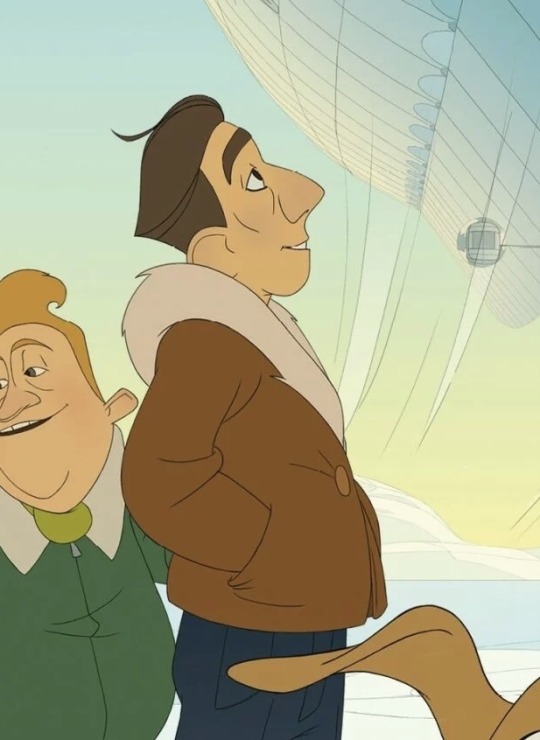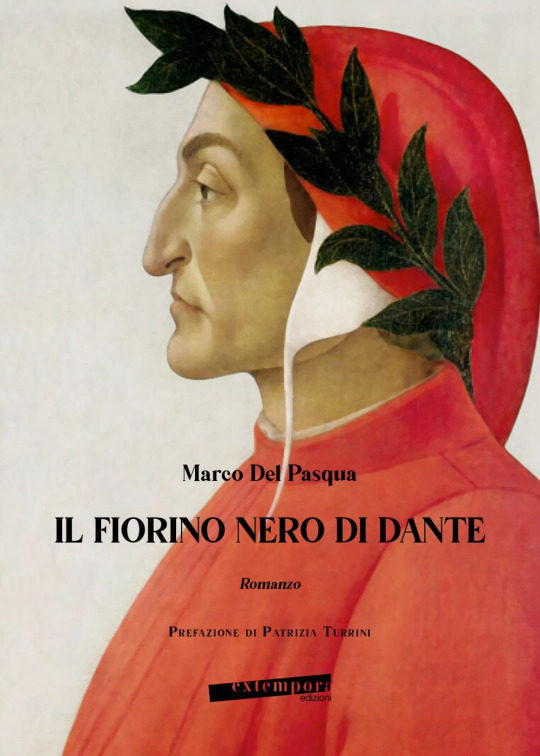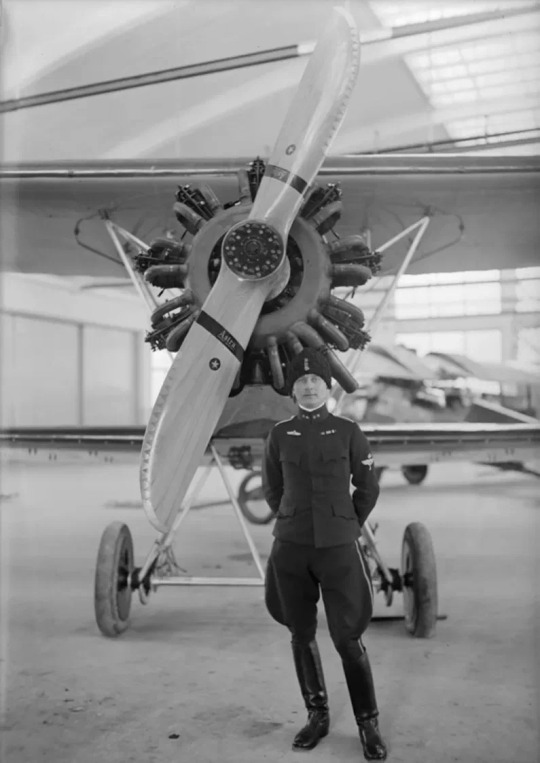#umberto nobile
Text

Titina ✨
Go watch this movie if you can! I loved it, honestly wanna watch it again already 🥺
25 notes
·
View notes
Text
Umberto Nobile from the Titina movie is such a baby girl




Im takling about the animated character voiced by Jan Gunnar Røise, NOT the man called Umberto Nobile that actually existed in real life, I’m not talking about him.
#if you have the opportunity to you should watch Titina#its a really great movie#very gorgeous music and visuals#tumblr has altered my brain wiring#making me call middle aged men baby girls#…. maybe it’s a good thing?#probably not#anyways watch the movie :)#my post#Titina#Titina the movie#Umberto Nobile#Titina Umberto Nobile#Umberto Nobile Titina movie#baby girl#middle aged man
7 notes
·
View notes
Text
Arno Breekveld Dicht de Dag
Aan mijn ouders
Heb ik dan nu de gedrukte / opdracht om een heel dun / rafeldraadje om mijn / ouders en mijzelf te rijgen, / opdat wij in het wit van de / wensheid bij elkaar blijven / zullen straks?
Krijg ik die taak dan / slechts met kost en inwoning / opgedragen? Verder niets / waar ik garen bij moge / spinnen? Wordt alleen op / bladzij 27 naar een / standplaats verwezen, niet / meer dan een…

View On WordPress
#20-ste eeuws#Atte Jongstra#dichter#Italia#NL#Noordpool#ontdekkingsreiziger#ouders#pseudoniem#Umberto Nobile#voorwoord#Zeppelin
0 notes
Text








"Colossea"
Colossea is a megayacht with a detachable superstructure, and that superstructure just happens to be a blimp. It's not just any blimp, though: it's a modern interpretation of the iconic, history-making Norge (ex N1), which marked the first verified expedition to the North Pole on May 12, 1926.
The creation of Roald Amundsen and Lincoln Ellsworth was piloted to glory by Captain Umberto Nobile at a time when humanity's dream of flight was just beginning.
Courtesy: Pierpaolo Lazzarini
#art#design#superyacht#megayacht#ocean#ship#luxury yacht#sea#boat#architecture#bebemoth#norge#billionairelife#billionaire#concept#render#yacht concept#airship#airship concept#flying private#colossea#blimp#explorer#explorer yacht#umberto nobile#roald amundsen#lincoln ellsworth#pierpaolo lazzarini
118 notes
·
View notes
Text

Swedish pilot Eingar Lundborg rescued Umberto Nobile after the crash of the airship Italia. 1928.
19 notes
·
View notes
Text

1927 Savoia-Marchetti SM 55 'Santa Maria' - Shigeo Koike
The head of the Italian government Benito Mussolini suggested that the colonel of the Regia Aeronautica Francesco de Pinedo, famous aviator for his solo raid Rome-Australia-Tokyo-Rome in 1925, made a flight to the Western hemisphere to inspire pride in the population of Italian descent who had emigrated to the Americas. This idea became the "Four Continents" flight of 1927, intended to demonstrate the ability of a flying boat to fly from Italy to Africa and cross the Atlantic Ocean to Brazil followed by several stops in South America and the Caribbean, a tour of the United States and Canada, and a transatlantic flight back to Europe that finally ended in Rome. Pinedo's pilots, Captain Carlo Del Prete, and flight engineer Vitale Zacchetti took off on February 13, 1927 from Cagliari, Sardinia, in an S.55 and headed west across the South Atlantic. Four months later, on June 16, 1927, the seaplane landed in the port of Ostia having traveled 46960 km (29180 miles) in 193 hours of flight and made more than 50 stops.
On 20 June 1928 Savoia-Marchetti S.55 I-SAAT Santa Maria, piloted by Ten. Col. Umberto Maddalena of the Italian air force, located survivors of Arctic explorer Umberto Nobile's crashed airship Italia on an ice floe about 120 km (75 mi) northeast of Nordaustlandet, Svalbard.
14 notes
·
View notes
Text
“ Sebbene, oggi, il numero delle prove a sostegno del ruolo fondamentale della cooperazione nell’evoluzione delle specie viventi si sia enormemente arricchito, l’idea continua a essere percepita come del tutto marginale rispetto alla solidità della controparte competitiva. Perché? Sono convinto che la causa principale dello scarso interesse per lo studio della cooperazione come forza evolutiva sia legata al fatto che la maggior parte – quasi la totalità – delle evidenze a sostegno di questa teoria proviene dal mondo delle piante che, come tali, non sono considerate rilevanti. L’antropocentrismo o, a voler essere magnanimi, l’animalocentrismo che affligge il mondo della scienza è un problema serio. La nostra visione del mondo come un luogo in cui i conflitti e le privazioni sono forze basilari che dominano l’evoluzione sono un classico esempio di questa distorsione animale. Modelli matematici molto conosciuti come, ad esempio, quello della competizione interspecifica, diventato poi noto come il modello predatore-preda, sviluppato da Vito Volterra e Alfred Lotka nel 1926, sebbene oggi siano intesi come validi universalmente, sono stati eleborati per descrivere una relazione di tipo animale.
Poco dopo la fine della prima guerra mondiale, Umberto D’Ancona, uno dei più importanti zoologi italiani del Novecento, studiando le popolazioni di pesci nel mare Adriatico, aveva notato che le percentuali delle diverse specie pescate mostravano un andamento tipicamente fluttuante. Cercando di capirne di più, ne parlò con Vito Volterra, grande matematico che in seguito sarebbe diventato anche suo suocero, e quest’ultimo sviluppò appunto il modello matematico che spiegava il fenomeno. Al di là della bellezza e del valore indiscutibile del modello predatore-preda, resta il fatto che questo modello, che ha così profondamente influito sullo studio della dinamica delle popolazioni naturali e più in generale, direi, sulla nostra idea di relazioni fra specie, è un modello ideato, sviluppato e sperimentato per rispondere ad esigenze tipicamente animali. Che ha a che fare il modello predatore-preda con il mondo delle piante? Non è l’unico caso, molti altri modelli che hanno avuto un grande peso sulla nostra consapevolezza del funzionamento delle comunità, meno noti al grande pubblico, ma molto influenti fra gli addetti ai lavori, hanno valore quasi unicamente in ambito animale e non possono assolutamente essere considerati di valore generale.
Vorrei fosse chiara l’assurdità della faccenda: scoperte ottenute nel mondo vegetale non vengono ritenute meritevoli di alcuna attenzione fin quando non sono replicate in ambito animale; al contrario, modelli ovviamente validi nel solo mondo animale sono, ipso facto, considerati di natura universale. Pensate all’irrazionalità di questa posizione: le scoperte effettuate nell’85% degli esseri viventi (le piante) richiedono, per essere ritenute universalmente valide, di essere confermate nello 0,3% del mondo animale! Non il contrario. E così viviamo con l’idea ridicola e pericolosa che quel che vale per lo 0,3% nobile della vita (gli animali) sia ciò che caratterizza la vita intera e che è meritevole di essere conosciuto, il resto è del tutto marginale. Non so se l’irragionevolezza di questa situazione vi colpisca come colpisce me. Che l’85% del mondo vegetale sia, da solo, la rappresentanza unica e indiscutibile della vita del pianeta non interessa a nessuno. È come se una legge proposta dall’85% dei rappresentanti del nostro Parlamento, per essere definitivamente promulgata, dovesse passare al vaglio di uno 0,3% della stessa rappresentanza parlamentare che, a sua discrezione, può approvarla o respingerla. “
Stefano Mancuso, La pianta del mondo, Laterza (collana i Robinson / Letture), 2022⁷; pp. 81-82.
#Stefano Mancuso#botanica#botanici#letture#natura#vita#La pianta del mondo#leggere#scritti saggistici#antropocene#antropocentrismo#cooperazione#Alfred Lotka#Vito Volterra#divulgazione scientifica#biologia#evoluzionismo#Novecento#competizione interspecifica#animalocentrismo#zoologia#libri#Umberto D’Ancona#specie viventi#mare Adriatico#conoscere#mondo vegetale#uguaglianza#esseri viventi#discriminazione
14 notes
·
View notes
Text

Julia and the Shark
Author: Kiran Millwood hargrave
First published: 2021
Rating: ★★★★★
One of the best middle-grade books I have ever read I think. Kiran Millwood Hargrave is a gorgeous writer and her use of language is simply masterful. She also chooses fascinating topics and it pains me that from time to time all that lacks a certain impact. But Julia does have it. The simplistic illustrations are captivating and perfectly enliven the story.
The Last Princess: The Devoted Life of Queen Victoria's Youngest Daughter
Author: Matthew Dennison
First published: 2007
Rating: ★★★☆☆
If you have a truly deep interest in Queen Victoria, her family, or a life of nobility in the 19th century, this is a book you should read. Princess Beatrice never held any important political posts, never made a grand marriage, never had to make any momentous decisions, and is largely forgotten today. But Mathew Dennison put together a gentle portrait of her existence and through her introduced yet another layer to other, more famous personages in Beatrice´s life. However, if you are after a book that would somehow shock you, or give you tremendous new information or gossip, pass on this one. It is slow and the author does repeat his main points at almost every turn, which sometimes could be tedious. Also, prepare yourself for lots of assumptions that fill up empty places we know nothing about.
The Infinity of Lists
Author: Umberto Eco
First published: 2009
Rating: ★★★☆☆
A gorgeous and richly illustrated list of lists. I was surprised at how many things actually are "lists", some of the points were fascinating, and some went over my head. A difficult book to read to be honest.
Visions of Beauty
Author: Kinuko Y. Craft
First published: 2022
Rating: ★★★★★
I was waiting to show the book also to my mum, who studied art at university and had never heard of Kinuko Y. Craft before. Today we spent over an hour going through the pages together and she said it was possibly the most beautiful thing she has ever seen. As for me, I have been aware of the artist because I came across her illustrations of fantasy book covers (Wildwood Dancing was a particular favourite of mine). When I, completely by chance, found the Visions of Beauty, I was greatly excited. What a stunning compilation of paintings and drawings! What I find particularly remarkable about them is that I can often clearly see the inspiration behind the picture (there is Da Vinci and my favourite Botticelli, there is some Mucha and Raffael, there are medieval altar paintings as well as portraits from the 19th century), but it is never a copy and always takes on the originality of its own. The pictures can be read, not just observed, with numerous tiny details incorporated into the portraits, so even when I think I have seen it all, I find more and more flowers, animals, symbols, and even human figures where before seemed to be just foliage. I cannot even choose my favourite painting, because there are way too many.
The Idiot
Author: Fyodor Dostoyevsky
First published: 1869
Rating: ★★★★☆
I don´t think there is much need to write yet another review of this book when so much has been said by more eloquent readers than I am. To me personally, it was particularly interesting after reading a biography of Dostoyevsky and I could easily see the roots and traces of many incidents and thoughts presented in this novel. But ultimately I did find the story a bit drowned by too much that was said in ways that were simply too dragged out. And yet I still think about that ending.
Imitation of Mary
Author: Alexander De Rouville
First published: 1977
Rating: ★★★★☆
Very comforting for anyone with Catholic leanings and devotion to Mary.
Demon in the Wood
Author: Leigh Bardugo
First published: 2022
Rating: ★★★★☆
I just really enjoy the stories Leigh Bardugo tells... this is a very nicely created graphic novel, but to be completely honest, I would have preferred it to be simply a written story.
Mislaid in Parts Half-Known
Author: Seanan McGuire
First published: 2023
Rating: ★★☆☆☆
I keep reading these because they are short and well-intentioned... but half of these books do not really have a story. This one is one of the storyless ones, not to mention I felt like it was by far the most filled with long speeches about points already made, conclusions already reached, dilemmas already introduced. Also, all the main characters seem to be the same.
Cleopatra: A Life
Author: Stacy Schiff
First published: 2011
Rating: ★★★★☆
Everybody knows the story of Cleopatra and yet, as this book lets you know in a very readable and convincing style, we actually know very little for certain. Stacy Shiff does for the Egyptian Queen what Robert K. Massie did for Catherine the Great: painting a vivid portrait of a woman in a position of power in an age when she was an anomaly. Her achievements have been tainted, her motivations misconstrued, her personality dragged through the mud. We arguably have a better grasp of the Russian empress than Cleopatra, but I imagine they both would have a lot to talk about.
Ruthless Vows
Author: Rebecca Ross
First published: 2023
Rating: ★★★☆☆
Much like I enjoyed the first installment, I enjoyed this second one as well. Everything is still in it, from a swoon-worthy romance to some truly excellent use of language and very evocative scenes of being trapped in a war. Nice.
The Poisonwood Bible
Author: Barbara Kingsolver
First published: 1998
Rating: ★★★★★
This is a story of a family, where every voice is their own and their feelings are communicated brilliantly to the reader. It is also a clear-eyed look at colonialism in the 20th century, human arrogance and prejudice as well as familial loyalty and love. It is a heartbreaking read, perhaps a bit too lengthy once the pinnacle of the story passes, but I found it both engaging and in some ways also enlightening.
The Testaments
Author: Margaret Atwood
First published: 2019
Rating: ★★★★☆
While it lacks the shock factor of its predecessor, The Testaments offers a satisfying conclusion in its stead. Was it necessary? Not really. But in the modern world the dystopia once imagined by Margaret Atwood needs to be remembered. Our reality seems to be striving towards it, sometimes with terrifying speed.
The Book of Magic
Author: Alice Hoffman
First published: 2021
Rating: ★★★★☆
More than magic itself, this whole series is about being loyal to your family and the unconditional love that binds that family. The Book of Magic reunites the reader with all of the characters that we already love and now we see the end of their journey. And truly I mean all of them. Alice Hoffman yet again writes in a way that makes you smell the lilacs and hear the bees in the trees. Lovely.
6 notes
·
View notes
Text
Arta prudenței
Vreodată încrederea în puterea de pătrundere a domniei tale și asentimentul de a voi să mărturisești adevărul te-ar putea împinge să-i dai vreun sfat bun și cuiva care-i mai sus decât domnia ta. Să n-o faci niciodată. Orice victorie atrage ura celui învins, iar dacă ai repurtat-o contra propriului stăpân, ori e prostească, ori e păgubitoare. Principii doresc să fie ajutați, nu depășiți. Dar să fii prudent și cu cei care-ți sunt egali. Nu-i umili cu virtuțile domniei tale. Nu vorbi niciodată de domnia ta: ori te-ai lăuda, și-ar fi vanitate, ori te-ai condamna, și-ar fi o prostie. Mai degrabă lasă să-ți descopere alții vreun păcat de nimic, pe care invidia să-l poată rumega fără să-ți aducă vreo pagubă. Va trebui să fii mai mult, iar uneori să pari că ești mai puțin. Struțul nu râvnește să se înalțe în văzduh, expunându-se unei căderi pilduitoare, ci lasă să i se descopere pe încetul frumusețea penelor. Și mai ales, dacă nutrești pasiuni, nu le scoate la vedere, oricât de nobile ți-ar părea. Nu trebuie să îngăduim tuturora intrarea în inima noastră. O tăcere prudentă și precaută este teaca înțelepciunii.
Umberto Eco - Insula din ziua de ieri https://www.cititoramator.ro/2023/02/arta-prudentei.html?utm_source=dlvr.it&utm_medium=tumblr
7 notes
·
View notes
Text

youtube
KRITIKA
Vetélkedés az Északi-sarkon – Titina: A négylábú felfedező

#KRITIKA#Vetélkedés az Északi-sarkon#Titina#Titina: A négylábú felfedező#FILMTEKERCS#MOLNÁR KATA ORSOLYA#Youtube
3 notes
·
View notes
Photo

Storia Di Musica #233 - Franco Mussida, Racconti Della Tenda Rossa, 1991
Il luglio dedicato ai chitarristi lo vorrei chiudere con un omaggio ad un grandissimo musicista italiano. Il suo nome dà i brividi di piacere ad una generazione musicale, quella del prog italiano, che come raramente è capitato poteva guardare a testa altissima i colleghi stranieri in quegli anni. Tra i chitarristi prog italiani, voglio ricordare tre nomi. Il primo, Nico Di Palo, dei New Trolls, agli inizi degli anni ’70 fu inserito in una classifica del prestigiosissimo magazine musicale inglese Melody Maker (all’epoca una Istituzione) tra i dieci migliori chitarristi europei; il secondo, Marcello Todaro, chitarrista del Banco Del Mutuo Soccorso, capace di disegnare la via mediterranea al prog con la sua chitarra vibrante e visionaria, e personalmente trovo una delle sue migliori performance nel disco omonimo dei Crystals, il super gruppo nato dalla sua uscita dal BMS e composto da Giorgio ”Fico” Piazza della Premiata Forneria Marconi al basso, Nanni Civitenga della Raccomandata con Ricevuta di Ritorno / Samādhi alle chitarre, Giorgio Santandrea degli Alphataurus alla batteria e Carlo Degani alla voce con Paolo Tofani degli Area, anche lui mitico chitarrista, a produrre (un disco prodotto nel 1974 che è rarissimo, dato che la Cramps non lo pubblicò mai, e vide la luce solo su Cd a fine anni ’90); il terzo è Alberto Radius, che ha attraversato 40 anni di musica italiana, segnando un traccia profondissima con i Formula 3 e il sodalizio “indiretto” con Lucio Battisti. Proprio la storia di Radius si intreccia con quella che ho deciso di raccontare oggi: a Milano nel 1965 una band, che si chiamava Quelli, il cui cantante è Antonio Teocoli, poi divenuto famoso comico con il nome di Teo, il cui batterista è Franz Di Cioccio, pubblicano il loro secondo singolo, Una Bambolina Che Fa No No No (cover in italiano di La Poupée Qui Fait Non del cantautore francese Michel Polnareff): hanno un buon successo e Alberto Radius è chiamato a sostituire il chitarrista e autore della band, chiamato al servizio di leva, Franco Mussida. Mussida dopo il servizio militare tornerà nei Quelli, alternandosi a suonare in alcuni tra i più importanti dischi italiani: ricordo tra gli altri le collaborazioni con Fabrizio De André, con Lucio Battisti, la sua chitarra è quella de La Canzone Del Sole, Paolo Conte, Francesco Guccini. Nel 1971, con l’ingresso di Mauro Pagani, la band dei Quelli diventerà la Premiata Forneria Marconi, che segnerà un’epoca, suonando nei più grandi palcoscenici del mondo, in tour negli USA 50 anni prima dei Maneskin, disco considerati dei capolavori anche dalla stampa estera, con milioni di copie vendute nel mondo. A quel suono contribuì non poco l’estro compositivo ed esecutivo di Mussida, il suo tocco elegante e delicato, in alcuni dei passaggi chitarristici più famosi del periodo. Più che a quel periodo, vorrei però ricordarlo da un altro punto di vista: impegnatissimo nel sociale (l'insegnamento all'interno di carceri e nelle comunità di recupero della Lombardia), Mussida nel 1984 fondò a Milano il Centro Professione Musica, una scuola di musica popolare contemporanea che recentemente è stata riconosciuta Centro di Alta Formazione Musicale, scuola a cui si deve la formazione di moltissimi artisti, ultimo dei quali Mahmood. Solo nel 1991 pubblica il primo disco solista: Racconti Della Tenda Rossa. La Tenda Rossa del titolo era la tenda all'interno della quale trovarono rifugio i superstiti dell'incidente del dirigibile Italia del Comandante Umberto Nobile da quando caddero sul pack della banchisa polare artica alle ore 10:33 del 25 maggio 1928 sino al momento del loro salvataggio operato il 12 luglio dal rompighiaccio sovietico Krasin. Il disco è composto da 14 brani, caratterizzati dalla sua chitarra jazz con accenni di musica etnica (sono gli anni dell’esplosione della world music). Mussida in alcune canta anche, sfoggiando un bel timbro dolce ed elegante: Voci, Orizzonti Del Cuore, uno strumentale delicatissimo per chitarra e pianoforte, Radici Di Terra sono piccole gemme intrise di smooth jazz, contrappunti di strumenti particolari, tra cui i flauti indiani, tabla, sezioni di fiati come il bel sax di La Cava Di Sabbia. Himalaya e la piccola serie di strumentali come La Tempesta, Porti Lontani, Piani Paralleli potrebbero passare per una musica scovata in qualche disco perduto della ECM; Caffé Concerto, che sa di bossa nova, ha in sottofondo il brusio delle voci di una clientela di un bar. Prodotto dalla Virgin, Mussida si avvale di una foltissima schiera di musicisti di grande qualità, tra cui spiccano i nomi di Tino Tracanna al sassofono, le voci di Angelo Branduardi e Fabio Concato in Radici Di Terra. Mussida dopo 4 anni pubblicherà un secondo disco, Accordi, e nel 1997 uno dei suoi progetti più visionari: Sinfonia Popolare Per 1000 Chitarre, un’opera rock in tre atti che in un memorabile concerto in Piazza Duomo a Milano venne eseguita da una mega orchestra di 1350 componenti tra chitarre, fiati e coro. Rimane un mito per la sua sconfinata cultura musicale, per il ruolo di maestro e insegnante e perchè si leva il tocco delle sue dita sulle corde ad alcuni dei momenti più belli del rock di questo paese, e non solo.
19 notes
·
View notes
Text
film reviews: The Red Tent (1969)
The Red Tent is a 1969 historical disaster drama film directed by Mikhail Kalatozov. A Russian-Italian coproduction, it was filmed in English and in Russian and released in three different versions, one for Italy, one for the Soviet Union, an one for international audiences. The International version features a soundtrack composed by Ennio Morricone acclaimed for its beauty.
Synopsis: In Spring 1928, Umberto Nobile, an Italian designer of airships, leads a second expedition to the North Pole in his new airship Italia, two years after explorer Roald Amundsen flies Nobile’s airship Norge to the North Pole. The Italia charts a course north from Italy through Germany and Norway to King’s Bay in Svalbard, where it starts its final leg to the North Pole. Although they reach the North Pole successfully on May 24, the flight ends in disaster the next day, as the airship, weighed down by ice, crashes into the Arctic ice pack and the control gondola breaks free of the envelope. No longer weighed down by the gondola, the envelope lifts off and floats away, taking some of Italia’s crew with it. Stranded on the ice pack, Nobile takes command of the rest of the survivors, and they gather supplies and wait for rescue. They find a tent among the supplies, and dye it red for visibility.
The survivors use a radio set to call for help, but the airwaves are swarmed by reporters in Svalbard, where a media circus is in progress, and a young amateur radio operator in Russia is the first to hear and relay their distress calls. The rescue mission is chaotic and three weeks go by with only intermittent contact with the outside world. Three men depart from the main group, intending to walk the 90 miles to dry land to direct rescuers back to the main group. Roald Amundsen takes place in the rescue operations, but his plane disappears in the Arctic and he becomes another casualty in the disaster. Several other rescue planes crash in the Arctic, stranding their crews on the ice. The first rescuer to make contact with the survivors arrives in a small plane on June 22 and can only take on one person, and insists Nobile come with him. Thinking he can lead rescue operations better from King’s Bay, Nobile agrees, and flies with him back to base, where he is court-martialed by the Italian government for abandoning his crew, is confined to his cabin, and is not allowed to help with the rescue efforts. The rest of the ground survivors remain marooned, with a ship on its way to rescue them helplessly stranded in the ice, and the fate of those carried away in the envelope unknown. Both the survivors who trekked and the ones who remained at the camp survive harrowing conditions. Finally on 12 July, the survivors of the two groups are rescued by another icebreaker, seven weeks after their ordeal began.
Nobile’s decision and his perceived cowardice by the world haunt him for the rest of his life, and he is unable to move on from the disaster, the part he played in it, and the lives that were lost in the expedition. Forty years after the expedition, now an old man, he calls on the spirits of those lost to return to him, and put him on trial. In this way it will finally be decided if he is truly guilty or not. Most of the spirits reach the verdict of Guilty, but Amundsen’s spirit arrives and overturns the verdict, saving Nobile’s soul from damnation.
Review: A good movie. The idea to frame the story as the memories of Nobile being retold while he is put on trial by those that died is very artful and philosophical, and sets this film apart from other historical disaster films.
The film was a Soviet-Italian coproduction, and the influx of Western cash and filmmaking technical know-how shows in the sets, miniature models, and special effects, which are all of very high quality, as good as anything in American films of the day. At the same time the film has the soul of Soviet filmmaking in its core, and boasts very fine directing and acting across the board (not to rag on Italian cinema, which also boats a fine acting tradition). In watching the disaster unfold, one begins to understand Nobile’s guilt and pain, which the actor displays as a quiet anguish, and the struggle to live with himself in the years after the disaster.
Naturally, the film leaves out some details of the Italia disaster for coherency of script, as any historical disaster film does, but I was disappointed that it didn’t depict Chief Mechanic Ettore Arduino, who was in the envelope, throwing down supplies onto the ice for the survivors after the crash in the last moments before the envelope drifted out of sight. His presence of mind and actions directly helped save the lives of the survivors on the ice in the initial few weeks of their ordeal. The film also places a bit more importance than is due on the Soviet parts of the rescue mission, which was an international effort.
Admittedly, the film is a little loose with historical accuracy. The character of Valeria, a nurse from King’s Bay who falls in love with Finn Malmgren, and later spurs Amundsen to help with the rescue effort, is completely fictional; in reality Malmgren had a fiancee back in Sweden whom he planned to marry, and Amundsen helped with the rescue efforts gladly of his own accord. Umberto Nobile himself watched the Italian premiere of the film, and he objected to “wanting a hot bath” as a partial motivation for abandoning his crew, denying it vehemently. Lundborg, the pilot who rescued Nobile, was an upright man in real life, not at all like his devious character in the movie. Additionally, Amundsen’s exact fate after taking off is unknown, as is the fate of those stranded in the Italia’s envelope; his ghost’s story that he spotted the downed envelope and what appeared to be survivors and tried to land, but his plane crashed and his pilot was killed, and he climbed out only to realize there were only dead bodies on the ice, before he eventually froze to death as well, is made up.
The movie is not the most exciting disaster movie, but it’s thoughtfully scripted very atmospheric. The cinematography highlights the beauty and ferocity of the Arctic, and the historicity of the tale makes it an interesting watch. The Russian version of the film has been uploaded on YouTube in two parts, and can be watched here: Part 1, Part 2 (be warned, the image size in Part 2 is very small). The film can also be watched in English, and in better definition, on Amazon Prime. I recommend the English version, which has Morricone’s soundtrack.
2 notes
·
View notes
Text
Milano, il Museo Nazionale Scienza e Tecnologia chiude l'anno con oltre 580.000 presenze

Milano, il Museo Nazionale Scienza e Tecnologia chiude l'anno con oltre 580.000 presenze.
Il Museo Nazionale Scienza e Tecnologia chiude il 2023, anno delle celebrazioni per il suo 70° anniversario, con un attivo di 320 giorni di apertura e oltre 580.000 persone (+45% rispetto all'anno precedente), di cui circa 70.000, ospiti di eventi; sono stati più di 40.000 coloro che hanno partecipato alle attività nei laboratori interattivi e alle visite guidate. Numeroso il pubblico straniero che ha rappresentato il 46% del totale.
" Il 2023 ha visto il consolidarsi dell'alto livello di offerta culturale e di servizi da parte del Museo, il cui risultato - ben visibile - è dovuto a una crescita concreta e continua di tutti gli asset della nostra organizzazione. Abbiamo continuato a lavorare sul nostro capitale umano e sulle sue competenze; ci siamo dedicati con attenzione a un mercato reattivo di ottime imprese, portando a collaborare con noi partner privati di alto livello; abbiamo migliorato i nostri processi gestionali e organizzativi per rendere più facile e proficuo collaborare con noi; abbiamo avuto particolare cura per tutte le infrastrutture avendo nel Comune di Milano, proprietario dell'immobile, un ottimo interlocutore. Grazie a questo continuo impegno verso e con i nostri 95 professionisti e 65 animatori scientifici, il contributo del Museo alla crescita della cittadinanza scientifica - tema sviluppato insieme a Barbara Gallavotti nel progetto Fatti per Capire - e il processo di orientamento per le nuove generazioni sono ancora aumentati, con grande soddisfazione da parte nostra e, numeri alla mano, di tutti i nostri interlocutori", dichiara Fiorenzo Marco Galli, Direttore Generale del Museo.
Il 2023 è stato un anno importante anche dal punto di vista scolastico essendo stato il primo, dopo il 2019, ad accogliere a pieno regime classi e insegnanti. I gruppi scolastici che hanno visitato il Museo e sperimentato i 165 percorsi educativi proposti, sono stati oltre 4.000. Inoltre, sono stati coinvolti più di 500 insegnanti a cui sono state erogate 150 ore di formazione nel corso di specifici incontri di sviluppo professionale. Il patrimonio culturale del Museo comprende 21.000 beni di cui 111 acquisiti nel 2023, 36 esposizioni permanenti tematiche, 14 laboratori e 3 opere d'arte digitale interattiva.
L'anno appena concluso ha visto concretizzarsi il nuovo progetto Fatti per Capire, curato da Barbara Gallavotti e realizzato dal Museo, nato per contribuire allo sviluppo della cittadinanza scientifica; l'arrivo della Collezione Caruso, un corpo unico che conta oltre 1400 elementi, tra artefatti, documenti e cimeli, relativi alla storia della riproduzione musicale e dell'industria discografica italiana ed estera, datati dal 1895 al 1935 e della testa fresante di una delle 6 TBM (Tunnel boring machine) "Talpe" utilizzate per la realizzazione della metropolitana M4 Blu di Milano; i due importanti restauri della Tenda Rossa , testimonianza unica della spedizione scientifica al Polo Nord guidata da Umberto Nobile e della Sala del Cenacolo, una delle poche testimonianze rimaste a Milano di Barocchetto Lombardo; tre nuove installazioni di arte digitale interattiva, tra cui Vibrations del media-artist Moritz Simon Geist, The Wall of Sound del collettivo panGenerator e Kaleidoscope di Karina Smigla-Bobinski; l'apertura al pubblico di STEM lab Viaggi per mare in cui i più piccoli diventano protagonisti di un appassionante viaggio tra mari in tempesta; la nascita della Virtual Zone , lo spazio del Museo interamente dedicato alle esperienze immersive, in cui il pubblico può sperimentare tecnologie come la realtà virtuale, aumentata ed estesa in tutte le loro sfaccettature; tra le innovazioni digitali del 2023, anche l'anteprima italiana assoluta Peach Garden. The Hidden Seasons, esperienza in realtà virtuale interattiva multiutente ideata dall'artista multimediale coreana Hayoun Kwon che il Museo ha ospitato.
Nel 2023 è inoltre iniziata la collaborazione con Fondazione TOG - Together To Go, centro che offre cure riabilitative gratuite a bambini con patologie neurologiche complesse, per portare le tecnologie della realtà virtuale all'interno dei loro percorsi di riabilitazione grazie al know-how maturato negli anni dal Museo.
Con i suoi 50.000 mq, il Museo, si conferma uno dei luoghi più prestigiosi di Milano dove organizzare conferenze, congressi, eventi, presentazioni e momenti conviviali che nel 2023 sono stati oltre 200. Tra questi l'incontro dell'astronauta italiana dell'Agenzia Spaziale Europea Samantha Cristoforetti con insegnanti e studenti delle scuole primarie e secondarie che hanno partecipato alle attività educative promosse dall'ASI e dall'ESA per la missione MINERVA....
#notizie #news #breakingnews #cronaca #politica #eventi #sport #moda
Read the full article
0 notes
Text
Marco Del Pasqua "Il fiorino nero di Dante", Extepora Edizioni
Prefazione di Patrizia Turrini
Extepora Edizioni
Umberto è un medico milanese ormai vicino alla pensione.Per pura curiosità indaga sulla provenienza del suo cognome e scopre una lontana origine nobile e toscana. Un suo antenato ghibellino abitava nel 1285 in un castello senese che il vescovo di Arezzo, Guglielmo degli Ubertini, aveva sobillato contro la città di Siena che lo aveva riconquistato…

View On WordPress
0 notes
Text





“Colossea”
Colossea is a megayacht with a detachable superstructure, and that superstructure just happens to be a blimp. It’s not just any blimp, though: it’s a modern interpretation of the iconic, history-making Norge (ex N1), which marked the first verified expedition to the North Pole on May 12, 1926.
The creation of Roald Amundsen and Lincoln Ellsworth was piloted to glory by Captain Umberto Nobile at a time when humanity’s dream of flight was just beginning.
Courtesy: Pierpaolo Lazzarini
#art#design#superyacht#megayacht#ocean#luxury yacht#boat#sea#ship#architecture#yacht gif#colossea#billionairelife#billionaire#yachtconcept#concept#render#gif#pierpaolo lazzarina#flyinggif#flying private#blimp#norge#blimp gif#airship gif#aiship#dirigible
66 notes
·
View notes
Text

Swedish pilot Eingar Lundborg rescued Umberto Nobile after the crash of the airship Italia in 1928.
16 notes
·
View notes